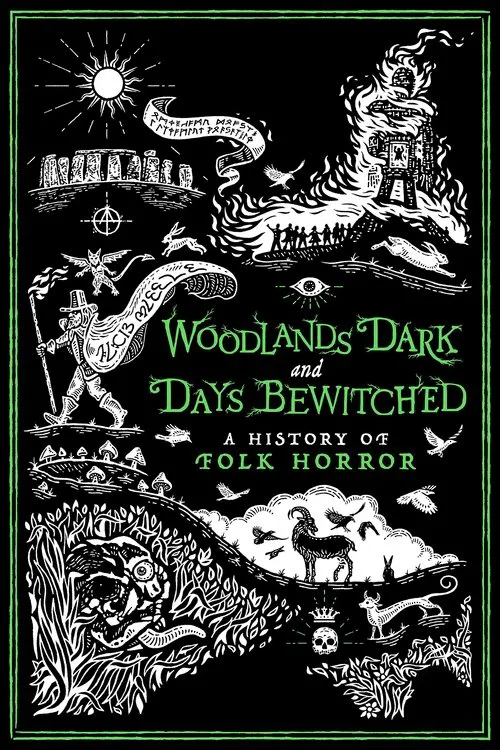Woodlands Dark and Days Bewitched: A History of Folk Horror

Trama
Woodlands Dark and Days Bewitched: A History of Folk Horror is a cinematic exploration that delves into the rich and complex history of folk horror, a genre that has captivated audiences with its eerie and often unsettling portrayal of rural landscapes and the dark, supernatural forces that lurk within. From its humble beginnings in the UK in the late 1960s to its proliferation on British television in the 1970s and its numerous manifestations in various countries, this genre has evolved over the years, reflecting the cultural anxieties and fears of its time. The film commences with the release of Piers Haggard's 1971 film, The Devil's Backbone, an early example of folk horror that set the tone for the genre. However, it is Robin Hardy's 1973 film, The Wicker Man, which truly cemented the genre's place in cinematic history. This iconic film, starring Edward Woodward as a police officer who travels to a remote Scottish island to investigate the disappearance of a young girl, is a masterclass in suspense and foreboding, as it slowly unfolds a tale of ancient pagan practices and human sacrifice. The Wicker Man's influence can still be felt today, and its cultural significance is a testament to the enduring power of the folk horror genre. The 1970s also saw a proliferation of folk horror on British television, with numerous films and series exploring the darker side of rural life. The film highlights the work of directors such as Lindsay Shonteff and Don Sharp, who produced a string of folk horror films, including The House of Seven Corpses and The Hunchback of the Morgue, respectively. These films may not have achieved the same level of cultural impact as The Wicker Man, but they helped to further establish the genre as a staple of British cinema. However, folk horror is not unique to the UK, and the film explores the genre's manifestations in various countries. The documentary highlights the Japanese folk horror films of the 1960s and 1970s, including Kwaidan and Blind Beast, which share a similar sense of unease and foreboding that is characteristic of the genre. These films, often using folkloric and mythological themes, offer a unique perspective on the human condition and our place within the natural world. The resurgence of folk horror in the last decade has seen a new wave of filmmakers drawing inspiration from the genre's rich history. The film highlights the work of directors such as Ari Aster and Robert Eggers, who have produced critical successes such as Hereditary and The Witch, respectively. These films, while not strictly folk horror, share a similar sense of unease and foreboding that is characteristic of the genre. Aster's Hereditary, in particular, draws heavily on the folk horror tradition, using themes of family trauma and pagan practices to create a sense of unease and dread. Throughout its exploration of folk horror, the film raises questions about the genre's cultural significance and its reflection of our collective fears and anxieties. Folk horror is often seen as a reaction to the changing social and cultural landscape of the late 1960s and 1970s, a time of great social upheaval and transformation. The genre's use of rural landscapes and pagan practices serves as a powerful metaphor for the disconnection between modern society and the natural world. Furthermore, the film highlights the often-overlooked influence of folklore and mythology on folk horror. The genre's use of mythological and folkloric themes serves as a commentary on our relationship with the natural world and our place within it. The film highlights the work of filmmakers who have used folk horror to explore these themes, including John D. Hancock's 1976 film, The Little Girl Who Lives Down the Lane, which uses a folkloric theme to explore the trauma and abuse of a young girl. In conclusion, Woodlands Dark and Days Bewitched: A History of Folk Horror is a comprehensive exploration of the genre's rich and complex history. From its beginnings in the UK in the late 1960s to its proliferation on British television in the 1970s and its numerous manifestations in various countries, folk horror has evolved over the years, reflecting the cultural anxieties and fears of its time. The film highlights the work of numerous filmmakers who have contributed to the genre, including some of the most influential and critical successes of the last decade. Through its exploration of folk horror, the film raises questions about the genre's cultural significance and its reflection of our collective fears and anxieties.
Recensioni
Raccomandazioni




